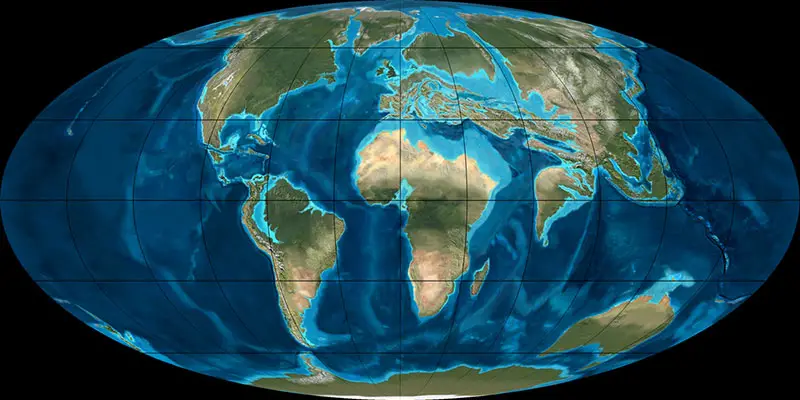†Phenacopithecus (Eosimiidae)
Phenacopithecus ist eine Primatengattung innerhalb der Familie Eosimiidae, deren 3 Mitglieder ab dem frühen Paläogen (Eozän) im Ypresium lebten, das vor ungefähr 56 Millionen Jahren begann und bis vor 47,8 Millionen Jahren andauerte. Viele Überreste wurden in China gefunden.
Phenacopithecus ist der Gattungsname zweier asiatischer Primatenarten aus der Familie Eosimiidae innerhalb der Unterordung Anthropoidea (Höhere Primaten), die im Eozän in Asien verbreitet waren.
Phenacopithecus krishtalkai
Das Typusexemplar mit der Bezeichnung IVPP V11997 ist ein rechtes Oberkieferfragment, in dem die Zähne P4 - M2 erhalten sind. Der Fund stammt aus dem Rencun Member der Heti Formation und ist zwischen 48,6 und 37,2 Millionen Jahre alt. Er wird am Institute of Vertebrate Paleontology and Paleoanthropology, Chinese Academy of Sciences aufbewahrt.
| Sammlung | Kommentar zum Fundort | Epoche, Alter | Geologie, Formation | Kommentar zur Sammlung |
|---|---|---|---|---|
| Heti Formation Locality 7 | Heti | F22 | ||
| Lithographie | Museum | |||
| "The Rencun Member includes well-developed paleosols as well as relatively fine-grained floodplain sediments" | IVPP |
Phenacopithecus xueshii
Das Typusexemplar mit der Bezeichnung IVPP V11998.4 ist ein rechter unterer Prämolar (P4). Der Fund stammt aus dem Zhaili Member der Heti Formation (Nanbaotou, Shanxi, China) und ist zwischen 48,6 und 37,2 Millionen Jahre alt. Er wird am Institute of Vertebrate Paleontology and Paleoanthropology, Chinese Academy of Sciences aufbewahrt.
| Sammlung | Kommentar zum Fundort | Epoche, Alter | Geologie, Formation |
|---|---|---|---|
| Nanbaotou | Heti | ||
| Lithographie | Museum | ||
| the Zhaili Member is dominated by "relatively fine-grained floodplain sediments... Some of the most abundant fossiliferous sites... developed as abandoned channel fills" | IVPP |
| Physiologie | |
|---|---|
| Gewicht: | ? |
| Schwestertaxa | |
